Car Accidents Near SMU Campus: Risks, Rights, and How to Get Help
February 29, 2024
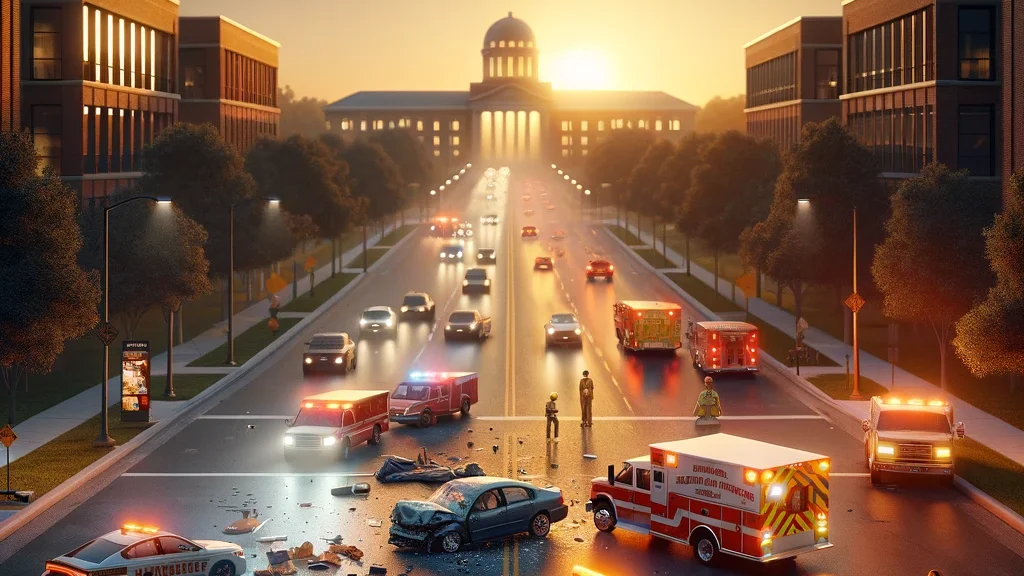
Navigating the Dallas streets near Southern Methodist University’s (SMU) campus can be a white-knuckle experience – car accidents are an unfortunate reality in this area.
Sadly, car accidents are one of the leading causes of death for young adults.
In this post, you’ll learn everything you need to know about navigating the aftermath of a car wreck near SMU campus.
Here’s an overview:
- Dallas Car Accident Hotspots Near SMU Campus
- Loop 12 & US-75: Where Wrecks Happen
- Loop 12 & Dallas North Tollway: Another Danger Zone
- US-75 & Forest Lane: A Risky Crossroads
- US-75 & Walnut Hill Lane: Where Caution Is Key
- US-75 & Royal Lane: A Dangerously Busy Junction
- US-75 & Lovers Lane: Where Timing is Everything
- US-75 & Mockingbird Lane: A Perfect Storm for Accidents
- US-75 & Knox/Henderson Street: Distractions and Tight Turns
- Hillcrest Avenue & Mockingbird Lane: A Crash Waiting to Happen
- Crash Checklist: First Steps Matter
- Dealing with Insurance: They’re Not on Your Side
- When a Car Wreck Impacts School
- Your Right to Fair Compensation
- How a Dallas Car Accident Lawyer Can Help You
Dallas Car Accident Hotspots Near SMU Campus
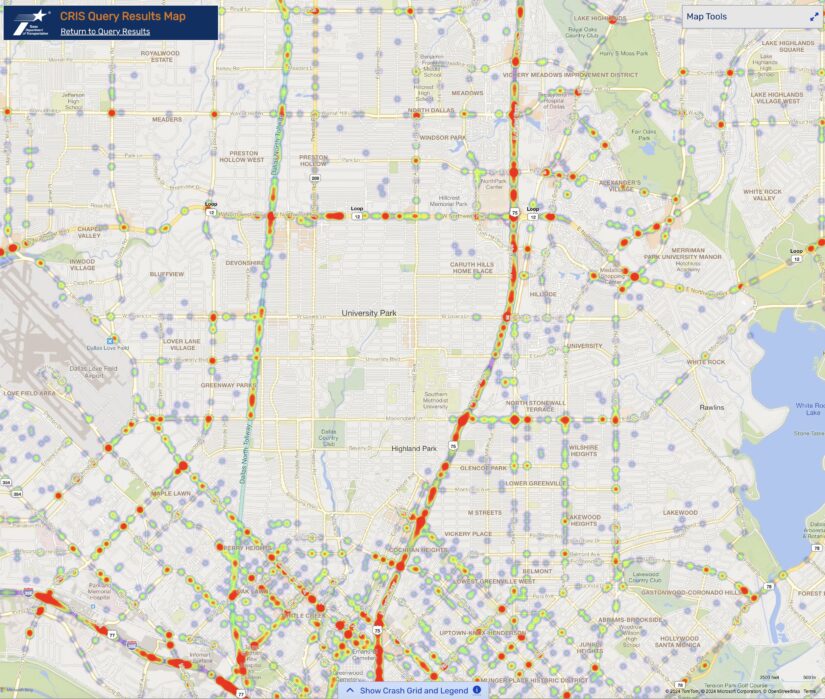
Let’s be real, there are some places near SMU where getting in a wreck seems more likely. Here’s a breakdown of major roads, highways, and intersections that have a reputation:
Loop 12 & US-75: Where Wrecks Happen
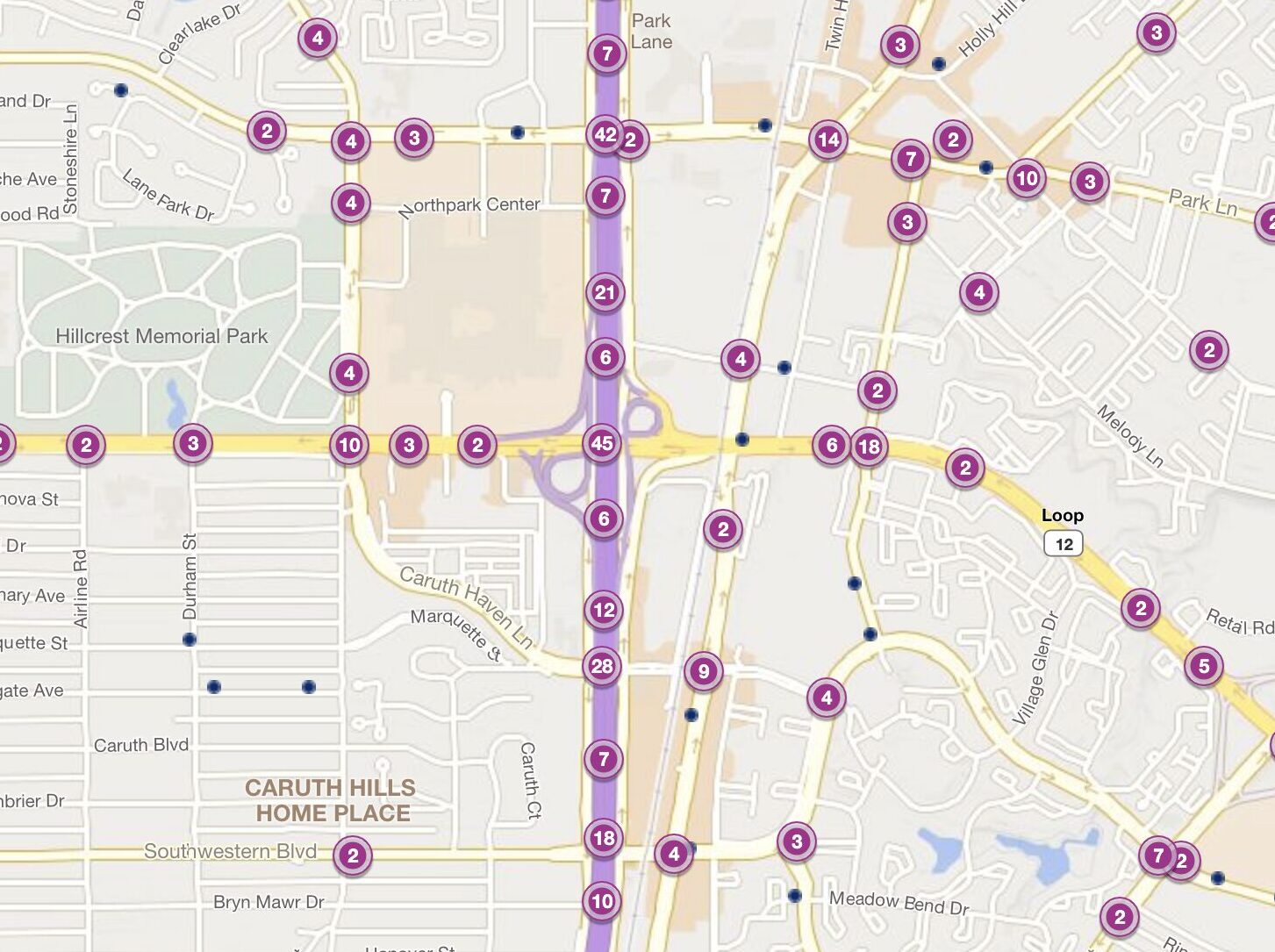
If you hear about a bad wreck in Dallas, there’s a good chance it happened at the intersection of Loop 12 and US-75 (Central Expressway). Here’s why this spot is notorious:
- Massive Traffic Volume: This isn’t just a couple of roads meeting. Loop 12 is a major highway loop around the city, and it intersects with one of the busiest North-South highways in Texas.
- High Speeds: The speed limits on both Loop 12 and US-75 are high in this area, which means crashes are more likely to be severe.
- Weaving and Merging Mayhem: Drivers changing highways often have to cross multiple lanes quickly, leading to risky merges and sideswipes.
- Confusing Layout: Some exits and on-ramps are very close together, confusing out-of-towners and increasing the chances of misjudging distances or traffic patterns.
Loop 12 & Dallas North Tollway: Another Danger Zone
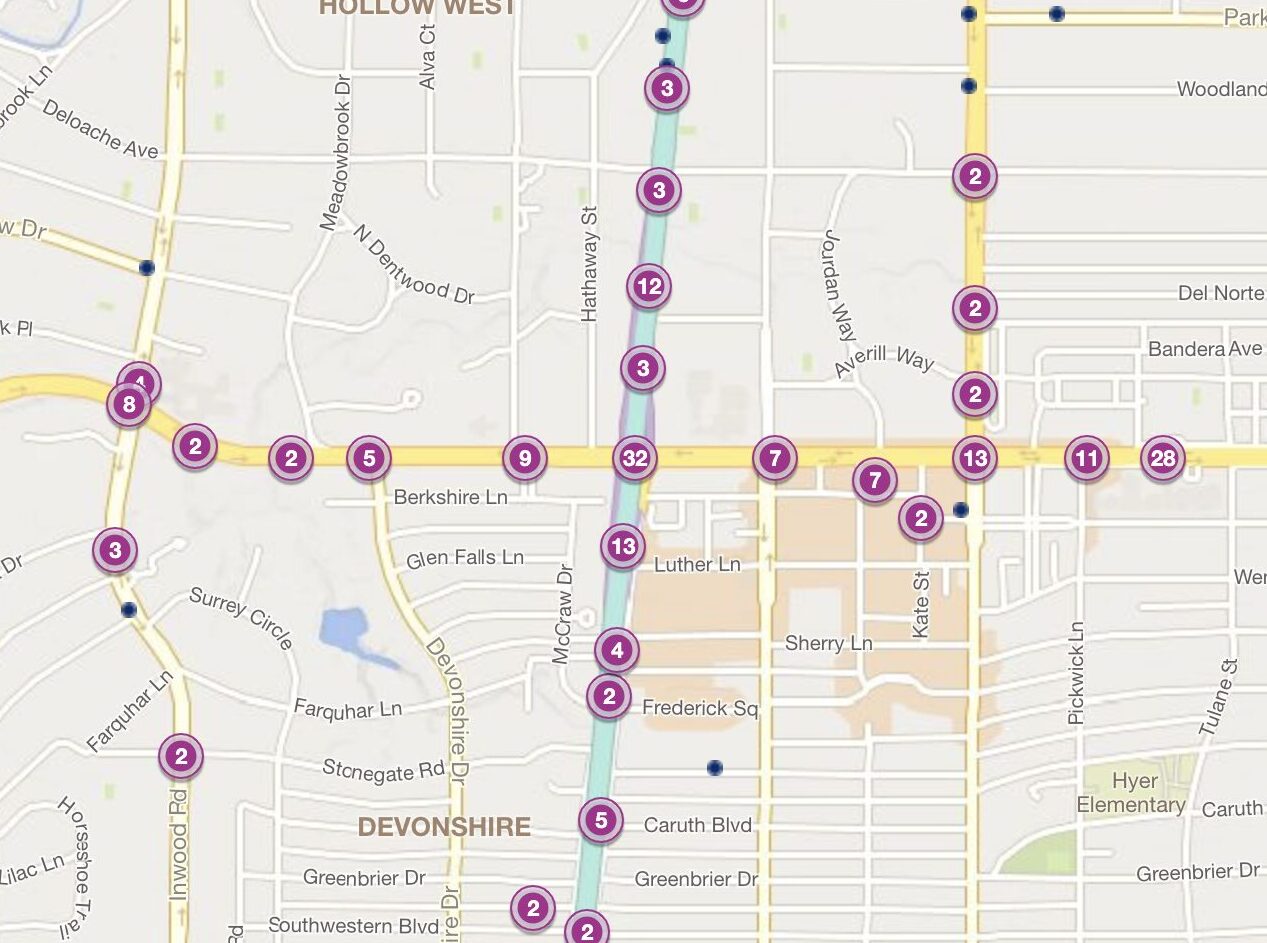
The intersection of Loop 12 and the Dallas North Tollway is another trouble spot worth being extra cautious around. Here’s what makes it so risky:
- Toll Confusion: Mixing toll roads and regular lanes can lead to accidents. Drivers may suddenly brake or change lanes unexpectedly when they realize they’re in the wrong lane for their intended exit.
- Speed Disparity: Traffic on the tollway moves fast, while Loop 12 can be more congested. This mismatch in speeds creates hazards when those roads come together.
- Blind Curves & Merges: Some of the ramps and exits in this area have curves that limit visibility. This can lead to last-minute lane changes or drivers misjudging the speed of oncoming traffic.
- Development & Traffic: The area around this intersection is continually developing, with new businesses and construction popping up. This adds to traffic volume and driver unfamiliarity with the area.
Remember, awareness of these danger zones can help you be a more defensive driver around them.
US-75 & Forest Lane: A Risky Crossroads
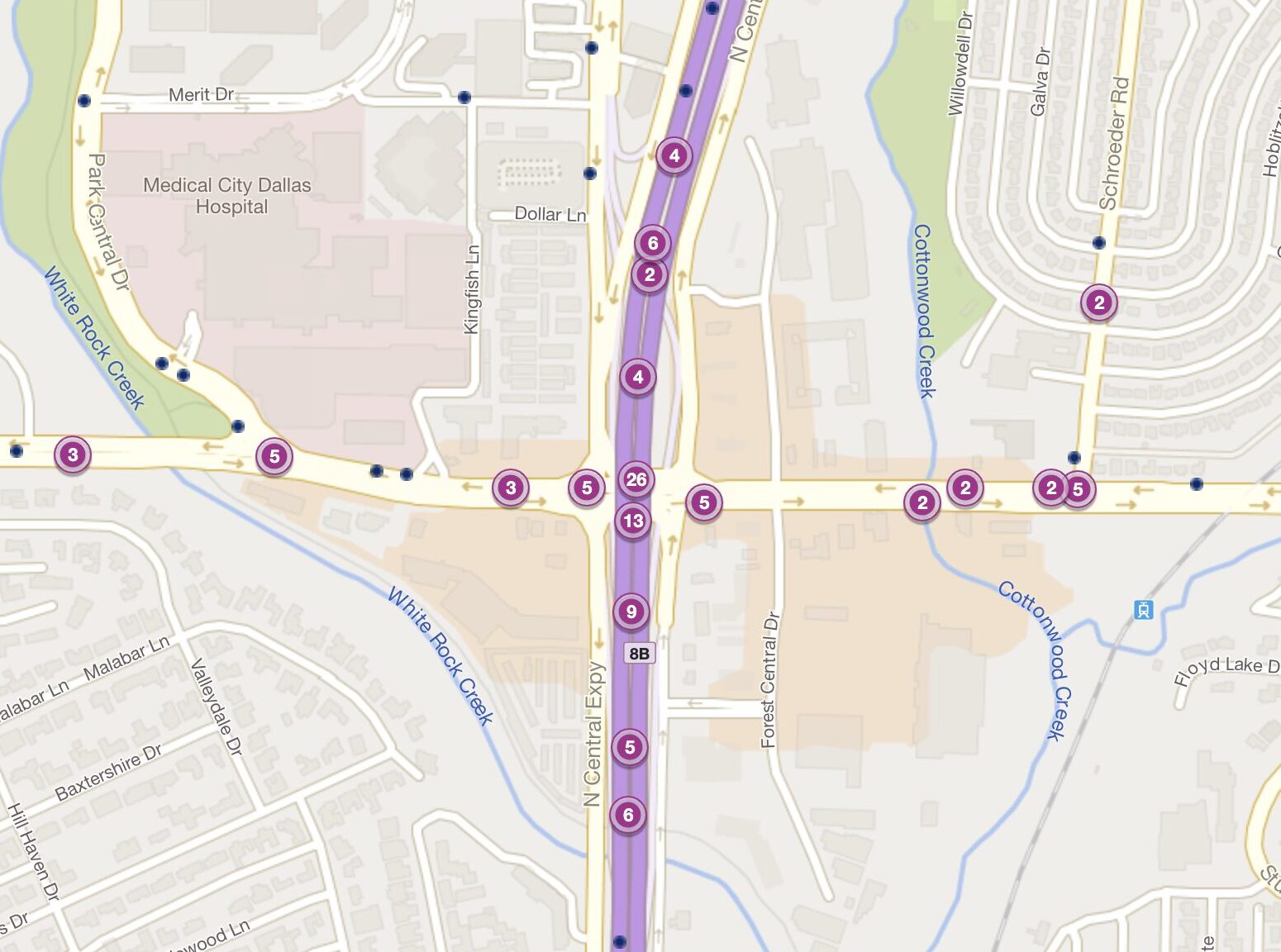
The intersection of Central Expressway (US-75) and Forest Lane is another accident-prone spot to be especially cautious of. Here’s why this area can be treacherous:
- High-Speed Merges: Cars entering and exiting the highway at Forest Lane often merge into fast-moving traffic. This mismatch in speeds and short merge zones heightens the risk of sideswipes and collisions.
- Traffic Bottlenecks: Especially during peak times, traffic backs up quickly on Forest Lane, sometimes extending out onto the US-75 exit ramps. This leads to frustrated drivers attempting risky maneuvers and sudden braking.
- Weaving and Confusion: The multiple lanes, on-ramps, off-ramps, and nearby feeder roads create a complex web of traffic. Drivers unfamiliar with the layout can make sudden lane changes or miss their exits, increasing the chance of an accident.
- Pedestrian Crossings: This intersection also sees significant pedestrian traffic, further complicating matters. Drivers focused solely on merging and lane changes might not anticipate pedestrians in the crosswalk.
US-75 & Walnut Hill Lane: Where Caution Is Key
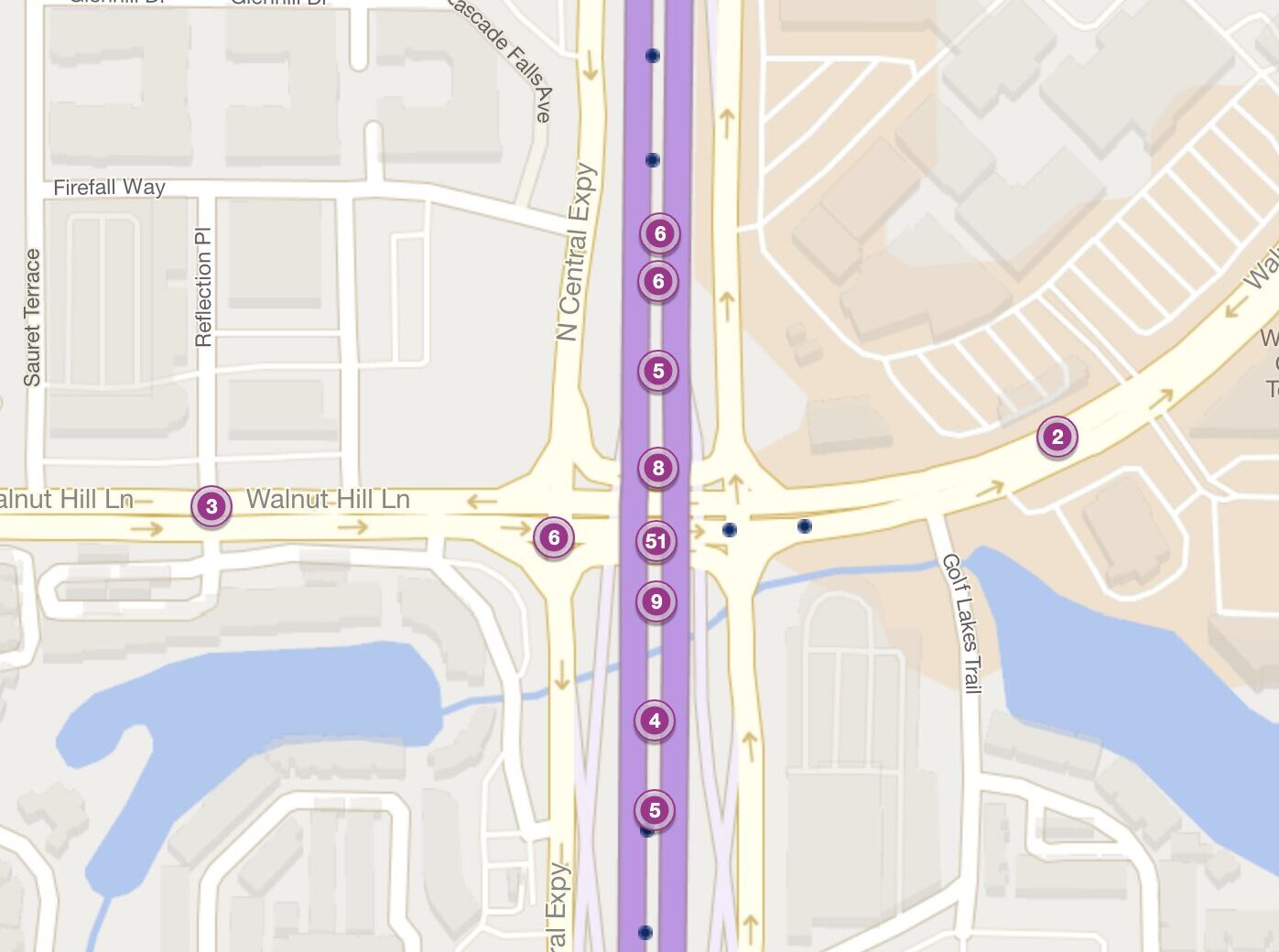
This major intersection where Central Expressway (US-75) and Walnut Hill Lane cross paths is no stranger to fender benders and worse. Let’s break down what makes it a hazard zone:
- Ramp Roulette: Multiple on and off ramps converge at tight angles with short merge lanes. This forces drivers to make quick decisions and lane changes, often under pressure from heavy traffic.
- The Illusion of “Open” Lanes: While US-75 traffic can seem to flow smoothly at times, those moments are deceptive. Sudden slowdowns and backups are common, leading to rear-end collisions.
- Intersection Complexity: Walnut Hill itself is a multi-lane road, and the signal timing for the turns from Walnut Hill onto US-75 can be confusing, leading to mistimed maneuvers.
- A Mix of Drivers: You’ve got everyone here – long-haul truckers trying to navigate a tight spot, commuters rushing to beat traffic, and folks unfamiliar with the area getting lost in the maze of lanes.
- Distractions Galore: Billboards, nearby businesses, and the sheer visual overload of this massive intersection can make it easy for drivers to miss important cues or misjudge traffic flow.
The following video shows traffic on the southbound side of IH-75 at the Walnut Hill Lane exit:
The following is a photograph of the northbound side of IH-75 approaching the Walnut Hill Lane exit. Notice the heavy traffic, limited space to enter or exit the highway, and numerous signs and billboards to distract drivers:
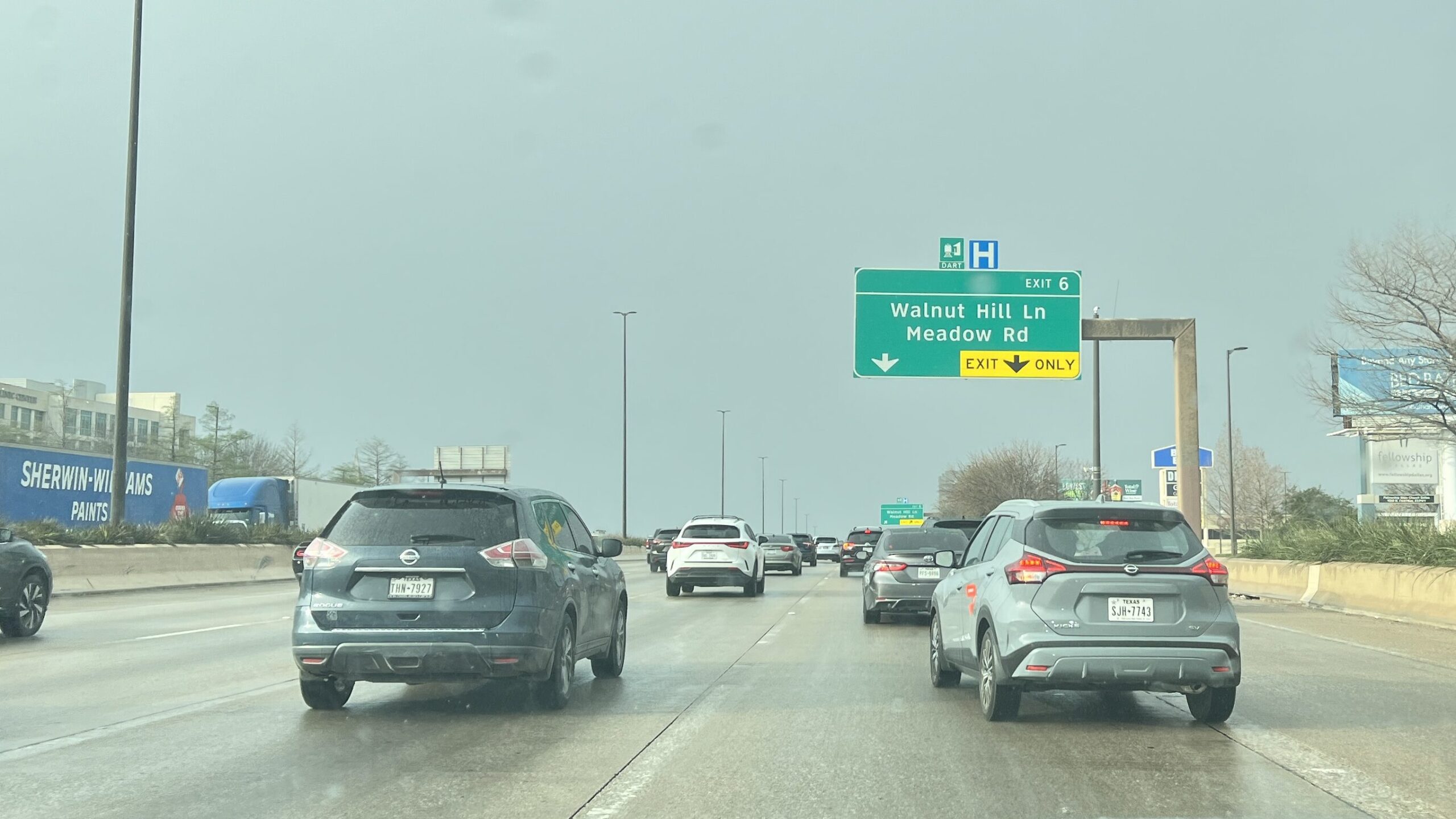
US-75 & Royal Lane: A Dangerously Busy Junction
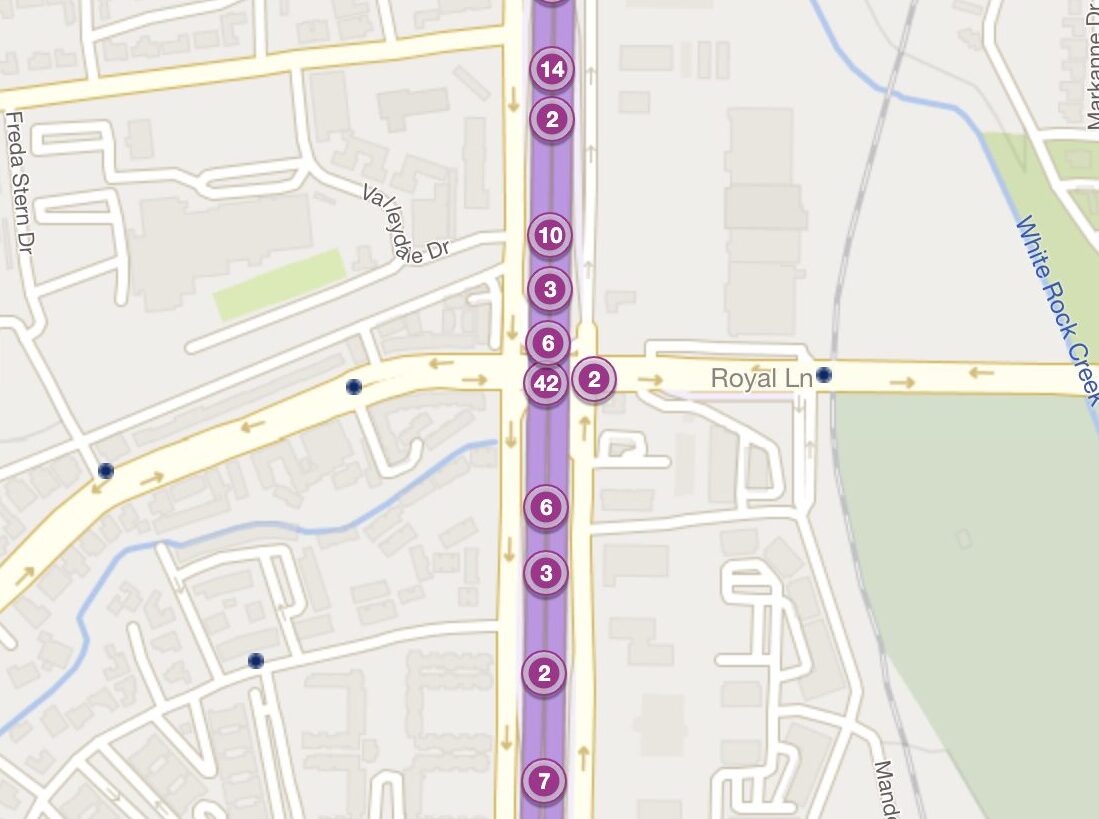
The point where Central Expressway (US-75) and Royal Lane meet is a major chokepoint, especially during peak hours.
Here’s why drivers need to be on high alert in this area:
- Heavy Traffic Volume: Royal Lane is a major east-west thoroughfare, funneling traffic to and from residential areas, businesses, and other major roads. This, combined with the constant flow on US-75, creates a recipe for congestion.
- Short On/Off Ramps: The ramps leading to and from Royal Lane are notoriously short. Drivers have limited time to merge or exit safely, leading to rushed decisions and frequent lane-change collisions.
- Blind Spots: Some merging areas have limited visibility due to curves in the road or structures like overpass supports. This makes it more difficult to see oncoming cars and judge distances.
- Development & Distraction: The constant development along Royal Lane means new businesses, changing traffic patterns, and potentially distracted drivers who are unfamiliar with the area.
The following video shows traffic on the southbound side of IH-75 at the Royal Lane exit:
The following video captured a reckless driver causing a car crash at I-75 and Royal Lane:
US-75 & Lovers Lane: Where Timing is Everything
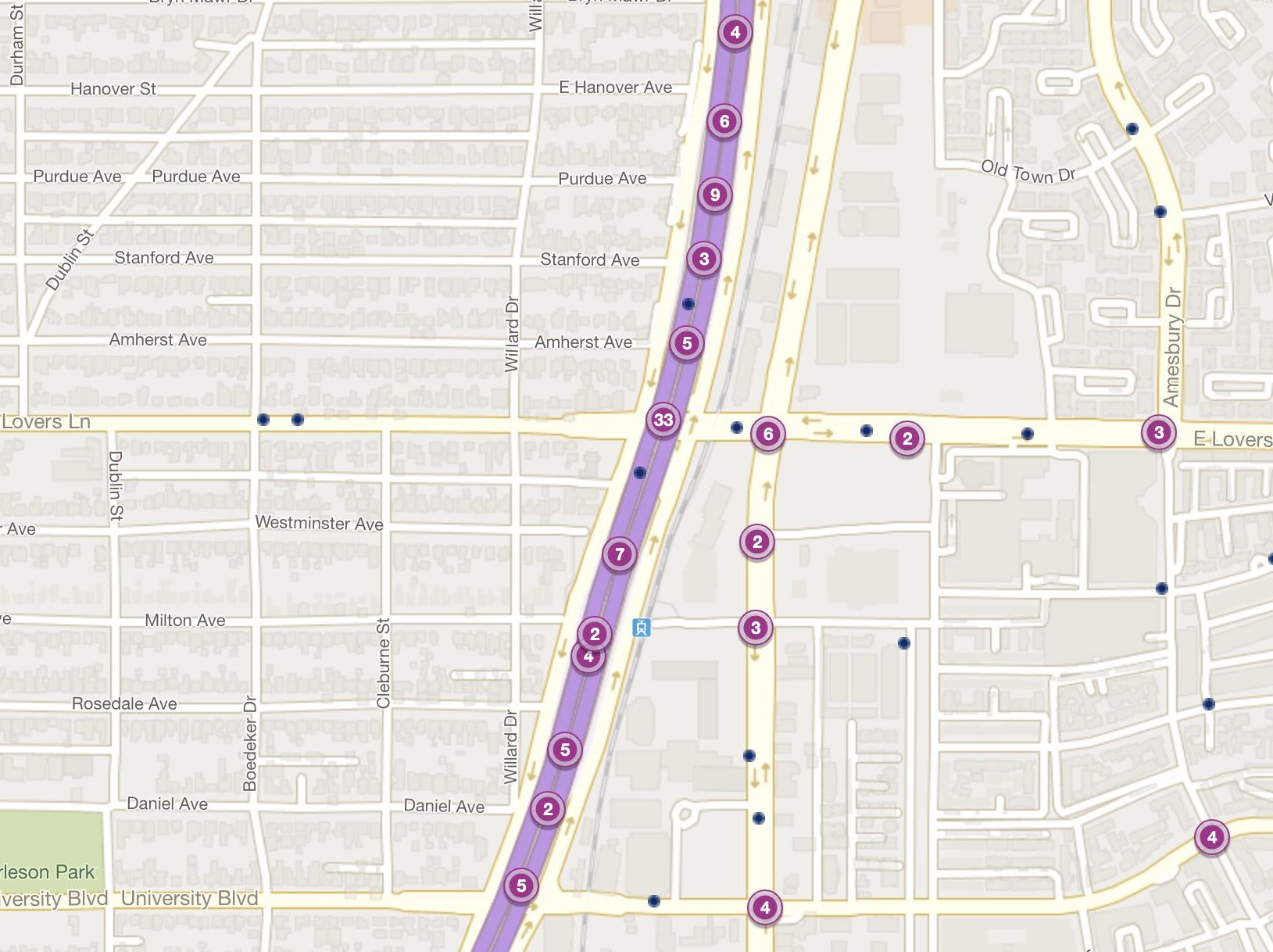
The intersection of Central Expressway (US-75) and Lovers Lane poses challenges for even experienced drivers. Here’s the breakdown:
- Tricky Turn Lanes: Turning left from Lovers Lane onto US-75 means crossing multiple lanes of high-speed traffic with potentially short turn signals. Misjudgments here often lead to dangerous T-bone accidents.
- Inconsistent Traffic Flow: Lovers Lane traffic can be unpredictable, mixing commuters rushing to get to or from work, with shoppers heading to nearby businesses, and SMU students navigating to campus. This inconsistent flow can lead to unexpected slowdowns and backups.
- Highway Hypnosis: While the highway may seem to flow freely at times, drivers can fall into a lull, then be caught off guard by sudden slowdowns and lane changes.
- Distracted Driving Hotspot: Busy intersections, especially those near popular shopping and dining areas, are prime locations for drivers checking their phones, adjusting navigation, or being distracted by passengers.
US-75 & Mockingbird Lane: A Perfect Storm for Accidents
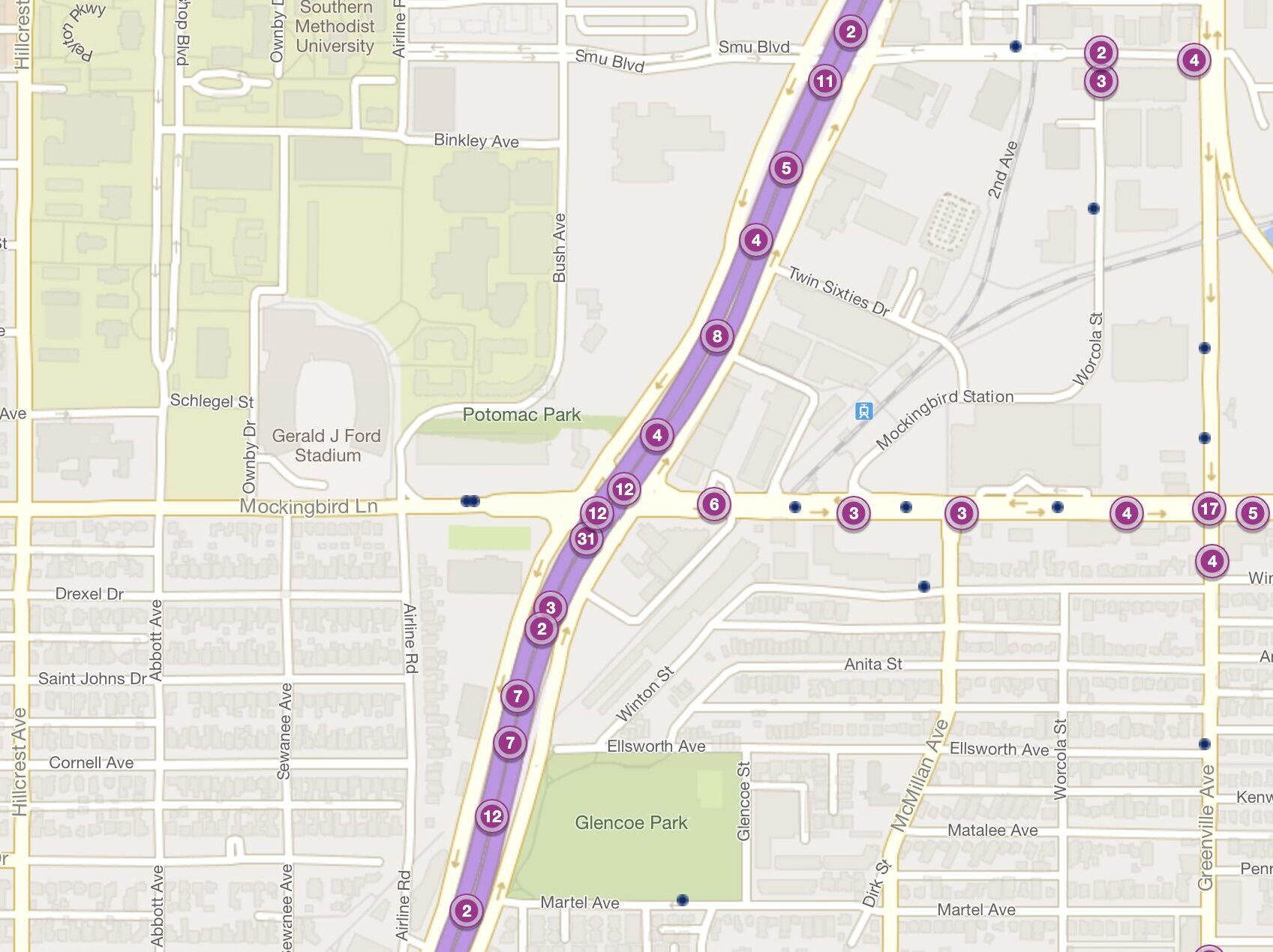
This major crossroads is all too familiar on local traffic reports, and for good reason. Here’s why it’s particularly hazardous:
- Rush Hour Mayhem: Mockingbird is a major artery for commuters, and it becomes a parking lot during peak hours. Frustrated drivers might run red lights or make risky maneuvers, leading to collisions at the intersection with US-75.
- Confusing Lane Changes: The multiple lanes, on-ramps, and off-ramps force drivers to make quick decisions in heavy traffic. Lane changes at the last second are common, leading to sideswipes and worse.
- The SMU Factor: Students heading to and from campus add an unpredictable element. They might be unfamiliar with the area, distracted, or rushing to class, all of which increases their risk of being in a wreck.
- Speed Zone Shifts: Speed limits change rapidly before, during, and after the intersection. Drivers not paying attention can unintentionally cause rear-end accidents from sudden braking or end up going dangerously fast through the intersection.
US-75 & Knox/Henderson Street: Distractions and Tight Turns
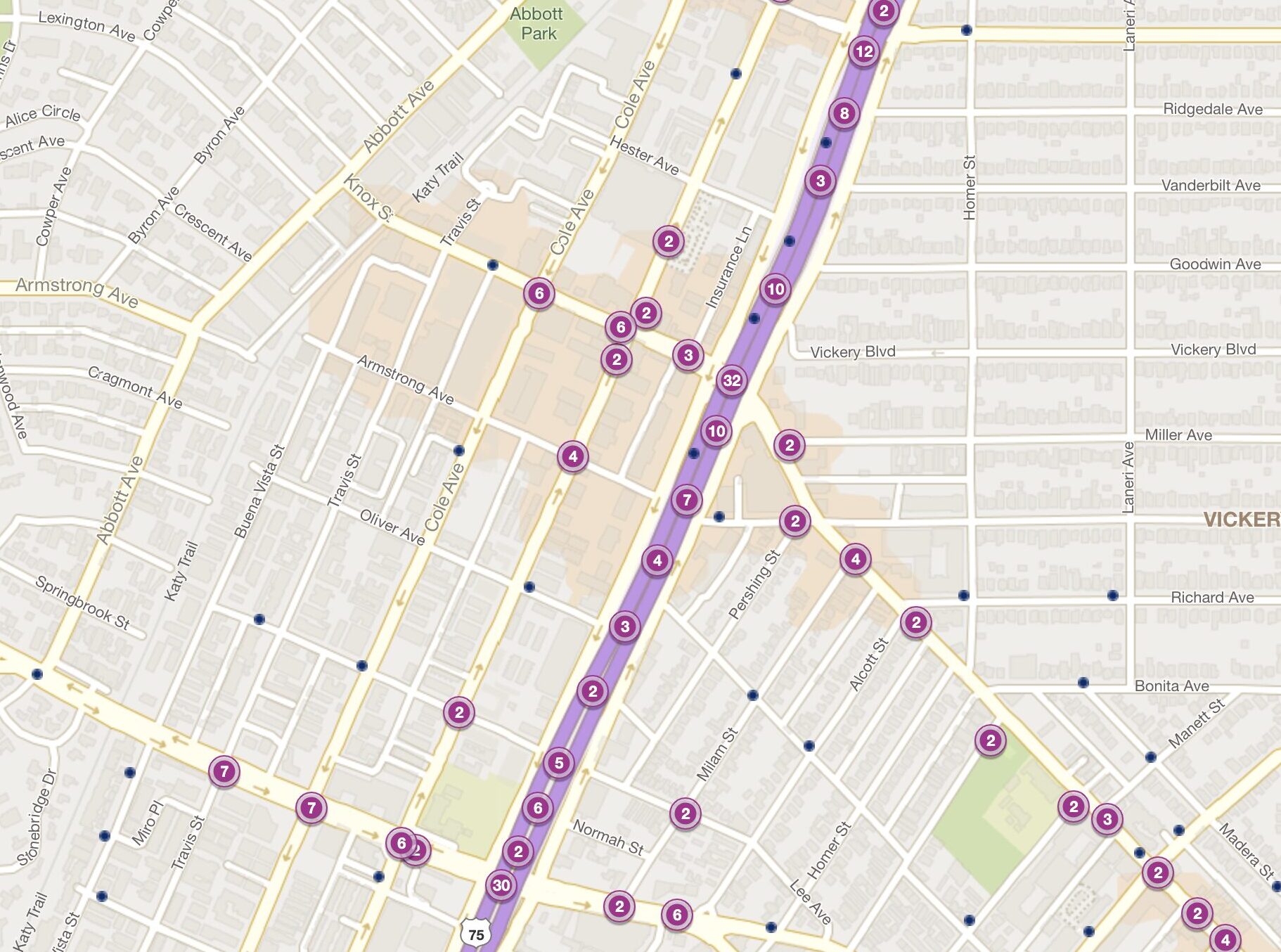
The intersection of Central Expressway (US-75) and Knox/Henderson Street earns its spot as an accident hotspot due to a few key factors:
- The “Entertainment Factor”: The Knox Henderson area brims with popular restaurants, bars, and shops. This draws in drivers who might be distracted by searching for parking spots or looking for specific businesses.
- Tight Merges and Turns: The on and off ramps for US-75 at Knox Henderson curve sharply, forcing drivers to slow down quickly while merging into high-speed traffic. This can lead to rear-end collisions or sideswipes.
- Unexpected Traffic Patterns: The mix of local traffic visiting Knox/Henderson businesses and drivers just passing through on US-75 creates unpredictable traffic flow. This increases the chance of mistimed turns and misjudgments.
- Pedestrian Crossings: The lively atmosphere of the area means more pedestrians crossing, sometimes mid-block or against the signal. Drivers focused on traffic might not anticipate someone stepping out. If you’ve been injured in a pedestrian accident, consider contacting an experienced personal injury lawyer to help you with your claim.
Hillcrest Avenue & Mockingbird Lane: A Crash Waiting to Happen
This busy intersection has an unfortunate reputation among SMU students and locals alike. Here’s why Hillcrest and Mockingbird is a recipe for trouble:
- The Left-Turn Gauntlet: Turning left at this intersection, in any direction, requires crossing multiple lanes of traffic going at fairly high speeds. Those short turn arrows and impatient drivers lead to frequent misjudgments and T-bone collisions.
- Traffic Mix: You’ve got SMU students navigating to and from campus, shoppers headed to the nearby retail centers, and commuters zipping down Mockingbird to get elsewhere. This mix of distracted drivers and varied traffic patterns is a dangerous combination.
- Visibility Issues: Depending on the time of day, the angle of the sun can create glare, making it harder for drivers to see each other clearly. Additionally, dense landscaping or parked cars near the intersection can sometimes limit visibility.
- It’s Just Always Busy: Hillcrest and Mockingbird rarely seem to have a lull in traffic. The steady stream of cars means there’s simply less margin for error, and more opportunities for crashes to occur.
Crash Checklist: First Steps Matter
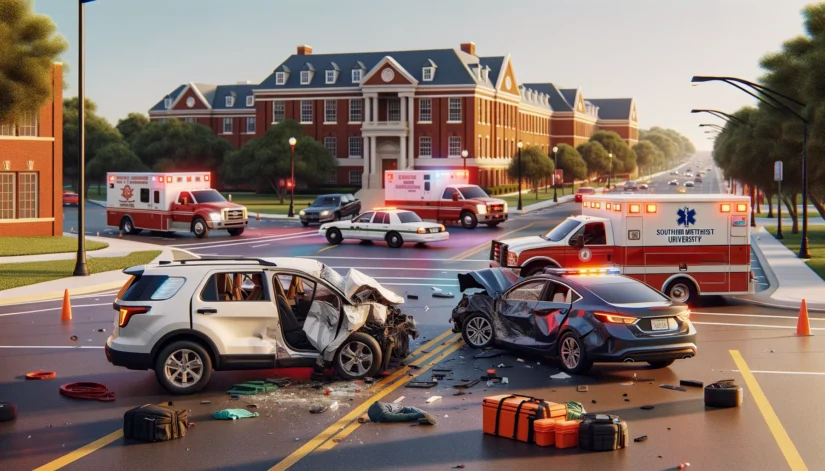
Okay, worst case scenario – you’ve been in a wreck. Panic sets in, but here’s the deal: what you do RIGHT NOW makes a huge difference for later.
Follow this checklist:
- Safety First: If you can, move your car out of traffic. Check yourself and anyone else for injuries. Even a fender bender, call 911. That police report is going to be your best friend.
- Evidence Time: Your phone is your weapon here.
- Photos, photos, photos: Damage to cars, the whole scene, skid marks, street signs, everything.
- Notes: Record the weather, road conditions, and jot down what the other driver says (but don’t chat too much).
- Never Admit Fault: Even saying “I’m so sorry!” could be twisted against you. Focus on getting info: the other driver’s name, insurance, license plate.
- Seek Medical Care ASAP: Adrenaline can mask pain. Go to the ER or urgent care, even if you think it’s nothing. Those medical records will be vital if you need to make a claim.
Remember, the other driver’s insurance company is already working to limit how much they have to pay. Be smart, protect yourself, and get the proof you’ll need.
Dealing with Insurance: They’re Not on Your Side
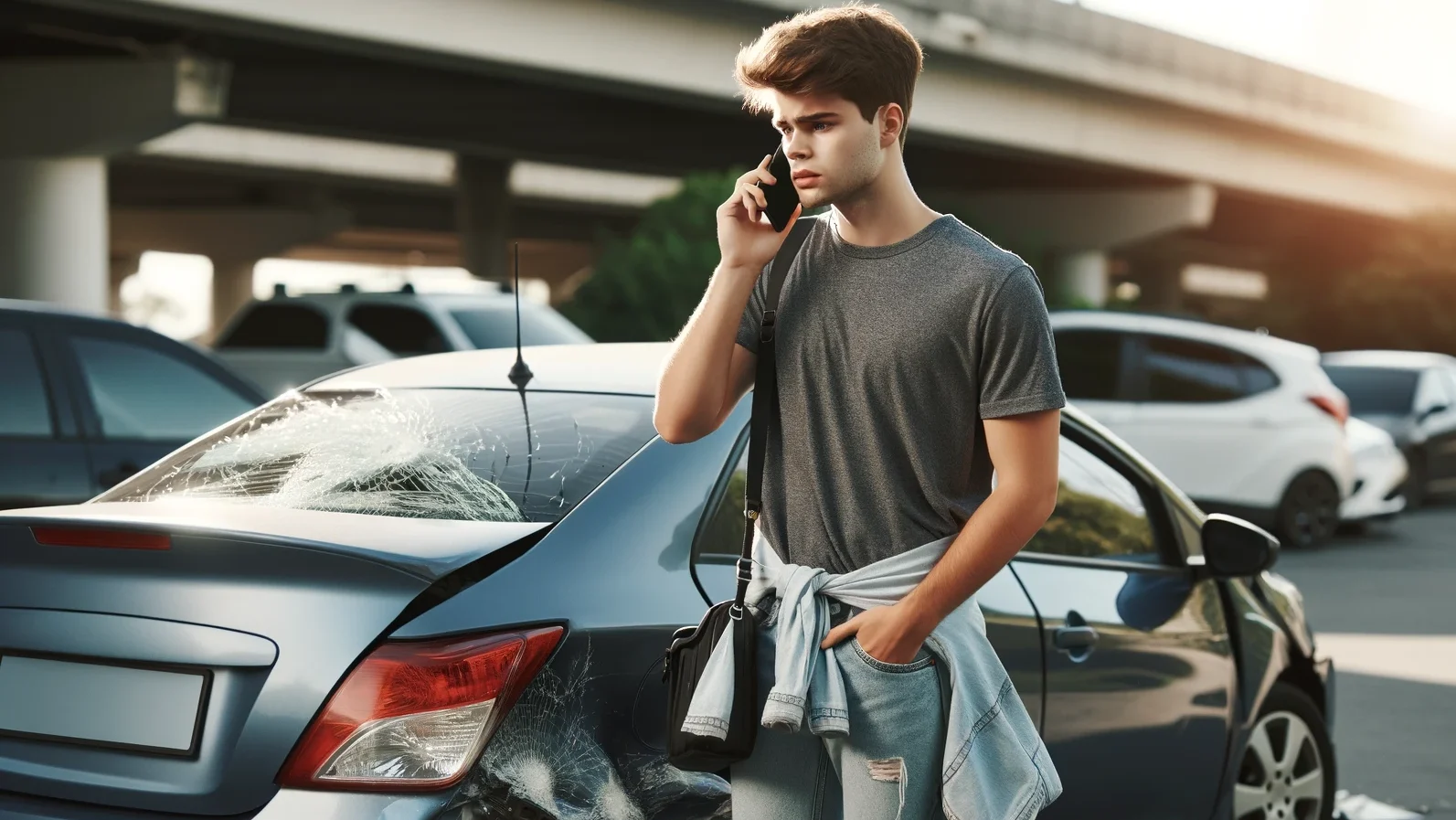
After a wreck, it seems like everyone needs something from you. The cops, tow truck drivers, and especially the insurance companies. Here’s the thing to remember: insurance companies are businesses out to make a profit, not give out huge checks.
- Your Insurance vs. Theirs: Your insurance company should be on your side, but they’ve got their bottom line to worry about too. The other driver’s insurance? They’re definitely working against you to minimize your claim.
- Recorded Calls: They’ll likely ask you to give a recorded statement about the accident. Be polite but brief. Avoid speculation or assigning blame. It’s best to talk to a lawyer before giving detailed statements.
- “Lowball” Offers: Don’t jump at the first offer they throw at you. Those early settlement offers are almost always way below what your case might actually be worth.
- Don’t Sign Releases: They might slip in papers asking you to release your right to further compensation. Never sign anything without having a lawyer look it over first.
This insurance game is complicated, and they’re counting on you not knowing the rules. Knowing what’s coming helps you play it smarter.
When a Car Wreck Impacts School

Being in a car wreck isn’t just about wrecked cars and doctor visits. It can mess up your whole life, especially as an SMU student juggling classes, exams, and everything else.
- Talk To Your Professors: Don’t just disappear if you’re hurt or recovering. Let your professors know what happened, especially if it means missing classes or deadlines.
- Missed Assignments: Each class probably has different policies for medical absences. Get familiar with them, so you don’t lose hard-earned points.
- Don’t Rush Back: If you’re not fully recovered, trying to cram for tests and keep up is a recipe for burnout. Your health comes first.
- SMU Resources: Does SMU Health Services or the Office of Student Advocacy have support systems for situations like this? Check their websites for information and how to get help.
Dealing with the school side of things while recovering is difficult, but it’s important. A wreck shouldn’t derail your education if you can help it.
Your Right to Fair Compensation
A car wreck isn’t just a headache – it can cost you big time. That’s why it’s important to understand that you have the right to be compensated for way more than just fixing your car.
- Beyond Just Car Repairs: Think bigger:
- Medical Bills: ER visits, doctor’s appointments, even physical therapy all add up.
- Lost Wages: If you miss work to heal or go to appointments, that’s money out of your pocket.
- Pain and Suffering: Injuries hurt, and that deserves compensation too.
- Future Impact: A serious wreck can affect your future. What if your injuries keep you from doing the internship you lined up, or make it hard to keep up with the workload in your major? That matters.
- Example: Let’s say a student gets a concussion in a wreck. They struggle to focus, their grades slip, and it jeopardizes scholarships. That’s an example of how a wreck can have long-term consequences.
- Time Limits: Texas has a “statute of limitations,” meaning you only have a certain amount of time to file a lawsuit. Don’t miss out – get legal advice early.
The goal of compensation is to make you whole again. Insurance companies won’t hand that over willingly, which is where a lawyer comes in.
How a Dallas Car Accident Lawyer Can Help You
If you’ve been hurt in a wreck near SMU – whether it was a minor fender bender or a serious crash – don’t try to handle the insurance companies alone. A Dallas car accident lawyer with experience handling cases similar to yours can make all the difference in getting the help and compensation you need. Here’s why hiring a lawyer might be your smartest move:
- They know the law: Car accident laws and insurance regulations are complex. A lawyer understands how to protect your rights and maximize your claim.
- They handle the paperwork: Let an experienced lawyer deal with the mountain of forms, deadlines, and insurance company communication.
- They fight for fair compensation: Lawyers know how to negotiate and aren’t easily intimidated by insurance company lowball offers.
- They give you peace of mind: Focus on healing and getting back to your SMU life, while your lawyer handles the legal battles.